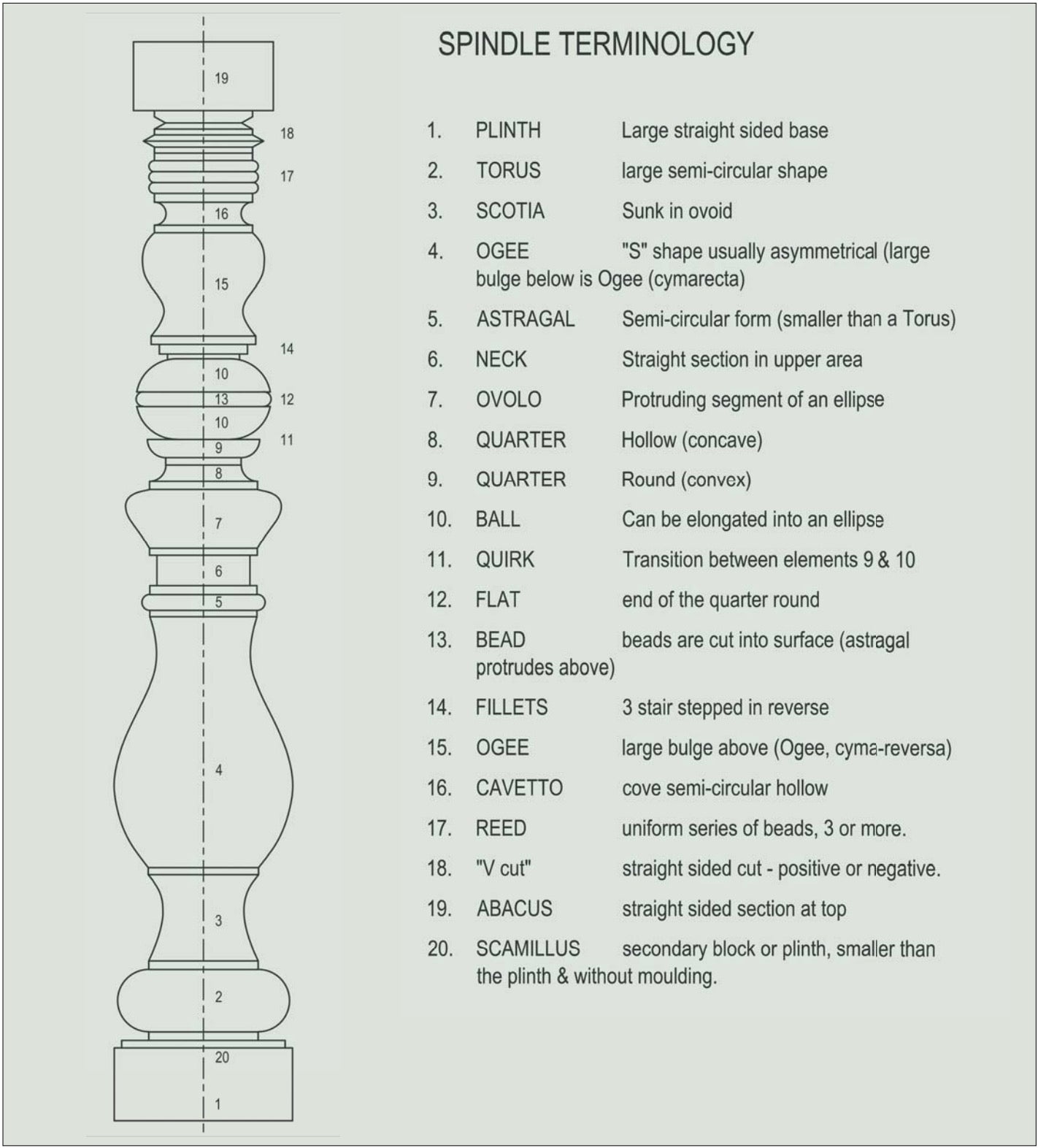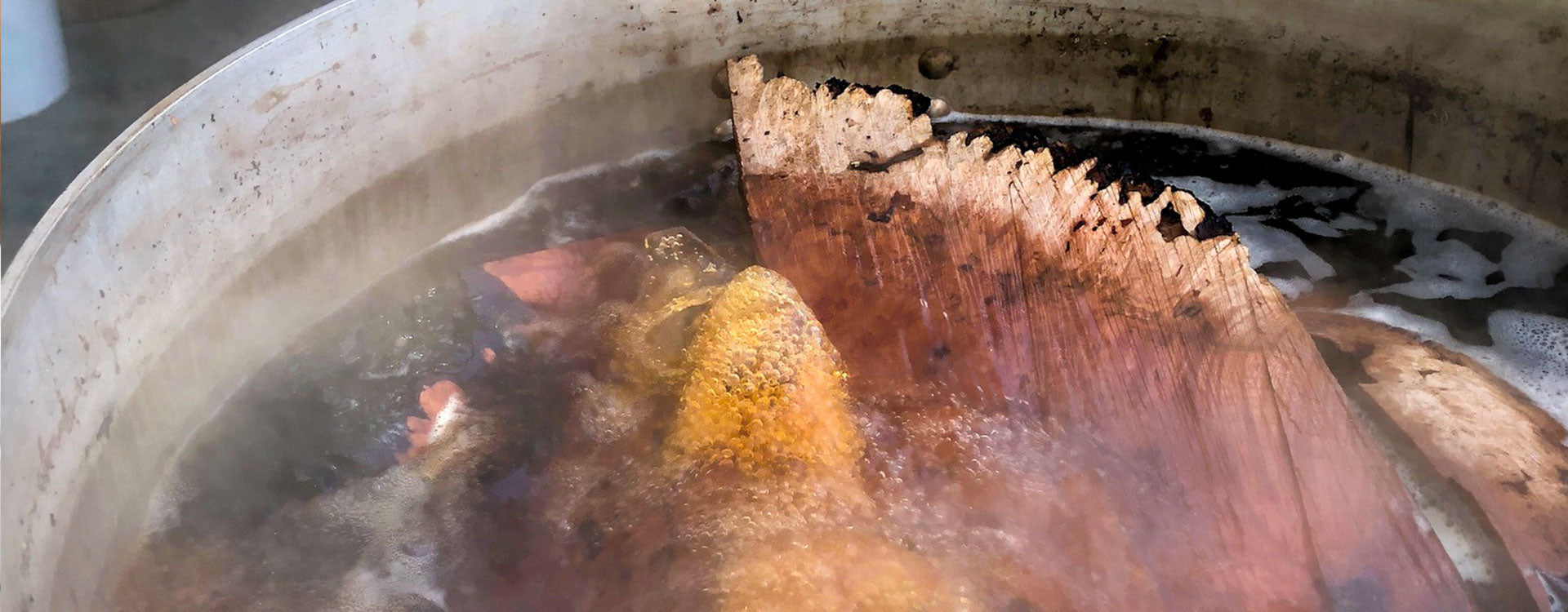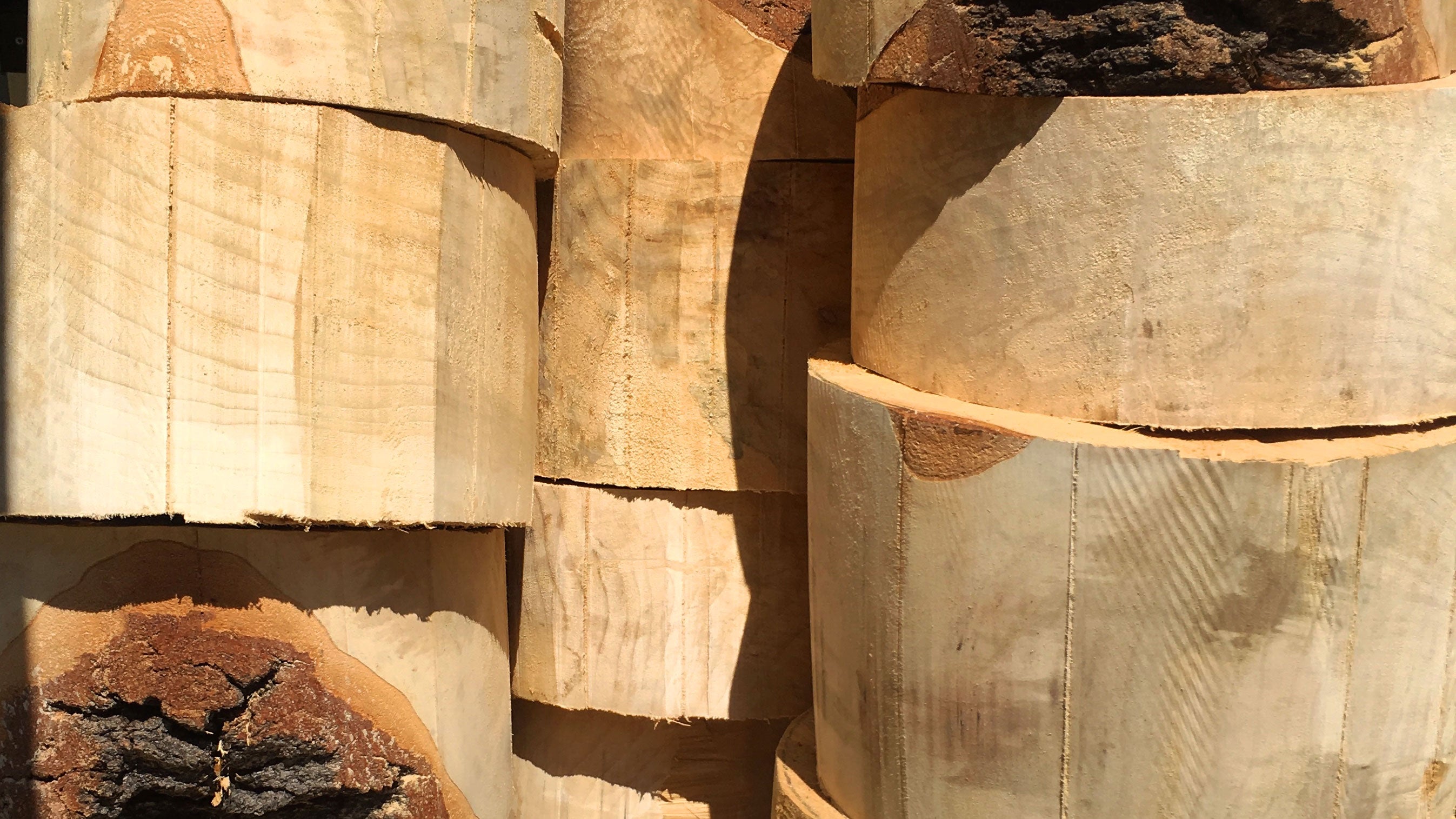Turning project: Architectural columns
I recently accepted a project to turn 3 columns for a house in Seattle that was more than 100-years old. The surviving column was of red cedar, and measured 5.5” by 5.5” by 60 inches long. Fortunately, my lathe can turn 24-inches by 66-inches long.
I contacted a local lumber dealer that specializes in red cedar and they agreed to cut some logs to the dimensions I needed…for $175.00.

I set the timber up on the lathe, located the exact center on both ends and marked the centers. On one end I screwed on a 4-inch diameter face plate using 8 screws, and used a center punch to mark the other end for a live center.
Silvia and I mounted the timber on the lathe between the spindle and the tailstock, adjusted the speed to 800 RPM (no vibration) and adjusted the tool rest.

Accuracy is critical because I am making a reproduction…so I transferred dimensions (distance and diameters) from the sample (old) column to the timber in increments . I go for one feature at a time, turning a band, bead or on ovulo as we go.
Because Cedar is a soft wood, I had to be very careful not to tear away any of the wood with an aggressive or uncontrolled cut. Even a sharp gouge left a very rough surface….arrgh!! So what to do? The best tool for this occasion was my 1 3/8” Alan Lacer skew.
Red Cedar is a very abrasive wood, which demanded frequent sharpening. Many many many checks with tape measure, 6-“ rule and calipers allowed me to create 3 reproduction columns in 9-hours.
Putting them side-by-side, any slight differences are negligible, and when installed 8-feet apart they look identical !!!

A demanding, and very satisfying project.
The customer was happy and I was happy for a difficult job that turned out well, keeping in mind that only one mistake means that the valuable wood was useless….we can’t put the wood back!!!
Don't forget to subscribe to our newsletter to receive special member offers directly to your email.





1013 comments
https://scrapbox.io/DIAMOND16/Diamond168
https://diamondlnwpg168.com/
https://github.com/Programming-from-A-to-Z/A2Z-F15/issues/30
https://github.com/defunkt/ambitious_activeldap/issues/14
https://github.com/openai/sparse_attention/issues/13
https://github.com/dashpradeep99/https-github.com-miguellgt-books/issues/6
https://github.com/HoyDiamond/DiamondSeo01/issues/1
https://github.com/cy4nguy/PythonSimpleKeylogger/issues/3
https://github.com/gzc/isystem/issues/1
https://github.com/SaeruHikari/SakuraEngine-Old/issues/3
https://github.com/xyba1337/ValorantEZTS/issues/3
https://github.com/henryjeff/portfolio-website/issues/16
https://github.com/EllanJiang/GameFramework/issues/76
https://github.com/HoyDiamond/DiamondSeo01/issues/2
https://github.com/qianjiahao/MongoDB/issues/2
https://github.com/u21h2/nacs/issues/13
https://github.com/Programming-from-A-to-Z/A2Z-F15/issues/31
https://www.paiklangna.com/
https://github.com/rafaballerini/GitTutorial/issues/200
https://github.com/Yalantis/uCrop/issues/948
https://github.com/Programming-from-A-to-Z/A2Z-F15/issues/30
https://github.com/defunkt/ambitious_activeldap/issues/14
https://github.com/openai/sparse_attention/issues/13
https://github.com/dashpradeep99/https-github.com-miguellgt-books/issues/6
https://github.com/HoyDiamond/DiamondSeo01/issues/1
https://github.com/cy4nguy/PythonSimpleKeylogger/issues/3
https://github.com/gzc/isystem/issues/1
https://github.com/SaeruHikari/SakuraEngine-Old/issues/3
https://github.com/xyba1337/ValorantEZTS/issues/3
https://github.com/henryjeff/portfolio-website/issues/16
https://github.com/EllanJiang/GameFramework/issues/76
https://github.com/HoyDiamond/DiamondSeo01/issues/2
https://github.com/qianjiahao/MongoDB/issues/2
https://github.com/u21h2/nacs/issues/13
https://github.com/Programming-from-A-to-Z/A2Z-F15/issues/31
https://github.com/qw3rtman/p/issues/35
https://github.com/rafaballerini/GitTutorial/issues/200
https://github.com/Yalantis/uCrop/issues/948
https://www.paiklangna.com/
https://diamondlnwpg168.com/
https://one789bet.mssg.me/
https://movie24h.info/
https://movie24h.info/contact
https://movie24h.info/huayThai
https://portfolium.com/entry/top-7-2025-3
https://portfolium.com/entry/truett-person-645-100
https://portfolium.com/entry/top-10-100
https://portfolium.com/entry/top-7-2568
https://portfolium.com/entry/top-7-2025-2
https://portfolium.com/entry/jackson-williams-30129725
https://portfolium.com/entry/thunder-thunder-100
https://portfolium.com/entry/top-4-2025
https://portfolium.com/entry/top-10-25
https://portfolium.com/entry/hehjdjdj-hehjdjdj-100
https://portfolium.com/entry/top-7-2025-1
https://portfolium.com/entry/top-7-2025
https://portfolium.com/entry/nsjdjdkd-wiwkkwlw-100
https://portfolium.com/entry/top-10-24
https://portfolium.com/entry/balmiki-kumar-100
https://portfolium.com/entry/1-261
https://portfolium.com/entry/cucu-darna-2025
https://portfolium.com/entry/1-260
https://portfolium.com/entry/1-259
https://portfolium.com/entry/rioqrandy-rioqrandy-2025
https://portfolium.com/entry/sidiidf-sisieiiw-2025
https://portfolium.com/entry/1-256
https://portfolium.com/entry/balmiki-kumar-30129725
https://portfolium.com/entry/top-7-2568-1
https://portfolium.com/entry/jjskkd-ejejjf-100
https://portfolium.com/entry/1-264
https://portfolium.com/entry/top-7-2025-5
https://portfolium.com/entry/top-7-2025-4
https://portfolium.com/entry/1-266
https://portfolium.com/entry/top-7-2025-6
https://portfolium.com/entry/1-267
https://portfolium.com/entry/sadil-sultn-2568
https://portfolium.com/entry/amel-darna-2025
https://portfolium.com/entry/top-7-2025-7
https://portfolium.com/entry/evan-darna-100
https://portfolium.com/entry/1-270
https://portfolium.com/entry/top-7-2025-8
https://portfolium.com/entry/ade-rizki-30129725
https://portfolium.com/entry/top10-20
https://portfolium.com/entry/1-271
https://portfolium.com/entry/top8
https://portfolium.com/entry/1-272
https://scrapbox.io/DIAMOND16/Diamond168
https://diamondlnwpg168.com/
https://github.com/Programming-from-A-to-Z/A2Z-F15/issues/30
https://github.com/defunkt/ambitious_activeldap/issues/14
https://github.com/openai/sparse_attention/issues/13
https://github.com/dashpradeep99/https-github.com-miguellgt-books/issues/6
https://github.com/HoyDiamond/DiamondSeo01/issues/1
https://github.com/cy4nguy/PythonSimpleKeylogger/issues/3
https://github.com/gzc/isystem/issues/1
https://github.com/SaeruHikari/SakuraEngine-Old/issues/3
https://github.com/xyba1337/ValorantEZTS/issues/3
https://github.com/henryjeff/portfolio-website/issues/16
https://github.com/EllanJiang/GameFramework/issues/76
https://github.com/HoyDiamond/DiamondSeo01/issues/2
https://github.com/qianjiahao/MongoDB/issues/2
https://github.com/u21h2/nacs/issues/13
https://github.com/Programming-from-A-to-Z/A2Z-F15/issues/31
https://www.paiklangna.com/
https://github.com/rafaballerini/GitTutorial/issues/200
https://github.com/Yalantis/uCrop/issues/948
https://scrapbox.io/DIAMOND16/Diamond168
https://diamondlnwpg168.com/
https://github.com/Programming-from-A-to-Z/A2Z-F15/issues/30
https://github.com/defunkt/ambitious_activeldap/issues/14
https://github.com/openai/sparse_attention/issues/13
https://github.com/dashpradeep99/https-github.com-miguellgt-books/issues/6
https://github.com/HoyDiamond/DiamondSeo01/issues/1
https://github.com/cy4nguy/PythonSimpleKeylogger/issues/3
https://github.com/gzc/isystem/issues/1
https://github.com/SaeruHikari/SakuraEngine-Old/issues/3
https://github.com/xyba1337/ValorantEZTS/issues/3
https://github.com/henryjeff/portfolio-website/issues/16
https://github.com/EllanJiang/GameFramework/issues/76
https://github.com/HoyDiamond/DiamondSeo01/issues/2
https://github.com/qianjiahao/MongoDB/issues/2
https://github.com/u21h2/nacs/issues/13
https://github.com/Programming-from-A-to-Z/A2Z-F15/issues/31
https://www.paiklangna.com/
https://github.com/rafaballerini/GitTutorial/issues/200
https://github.com/Yalantis/uCrop/issues/948